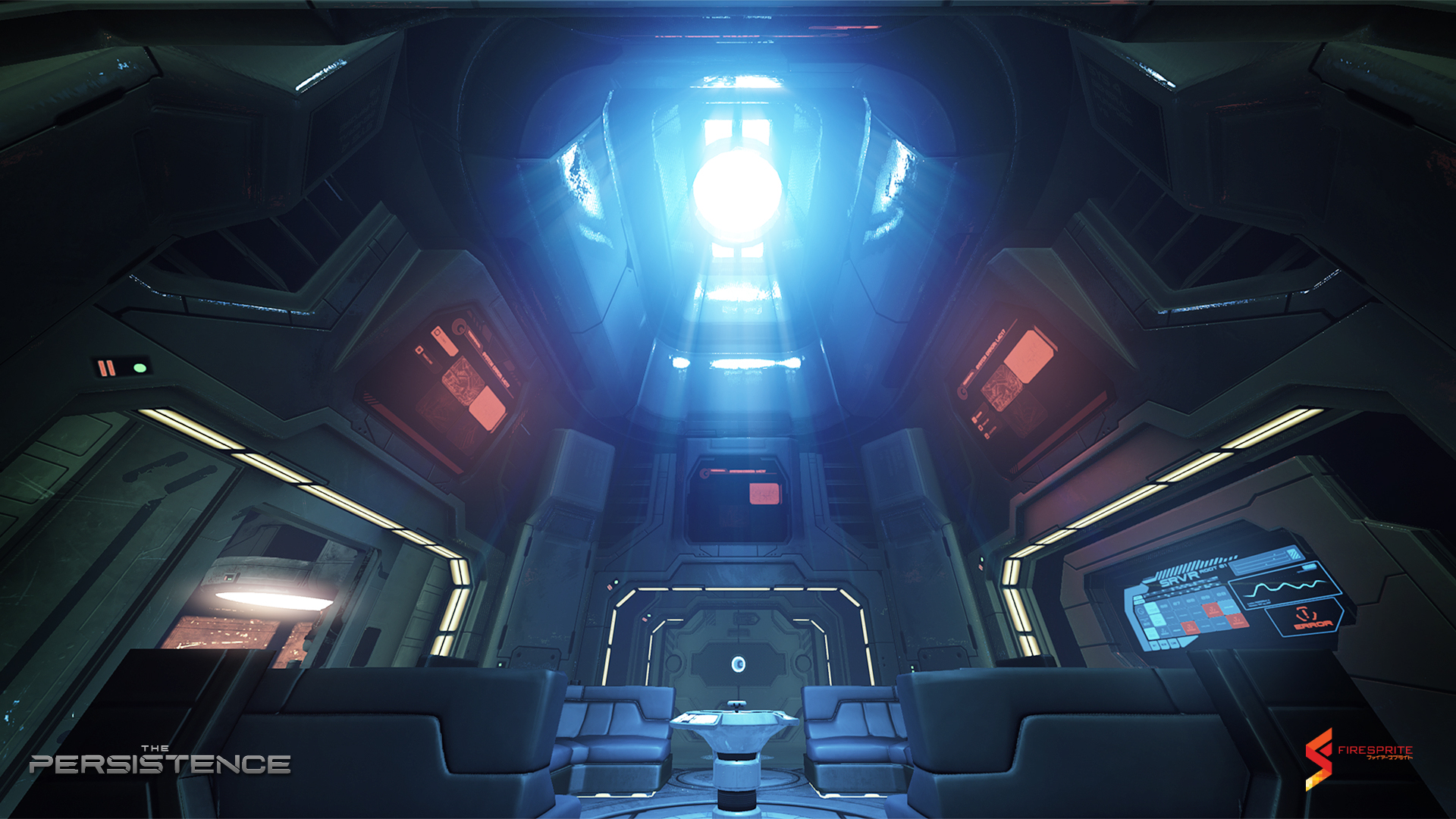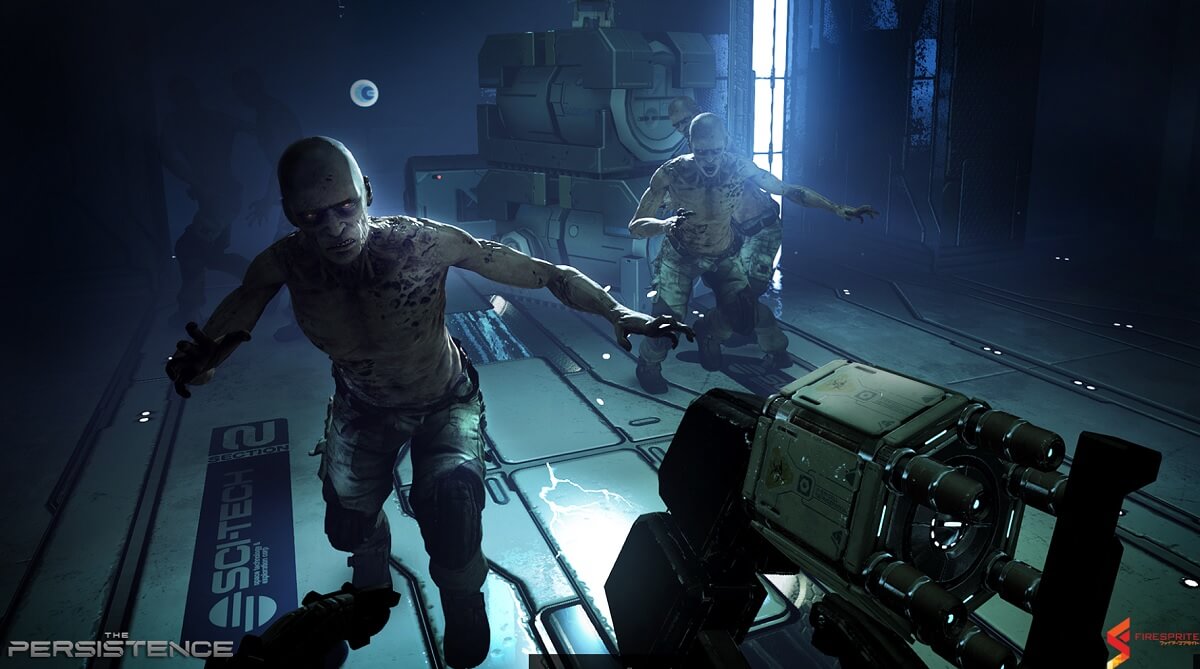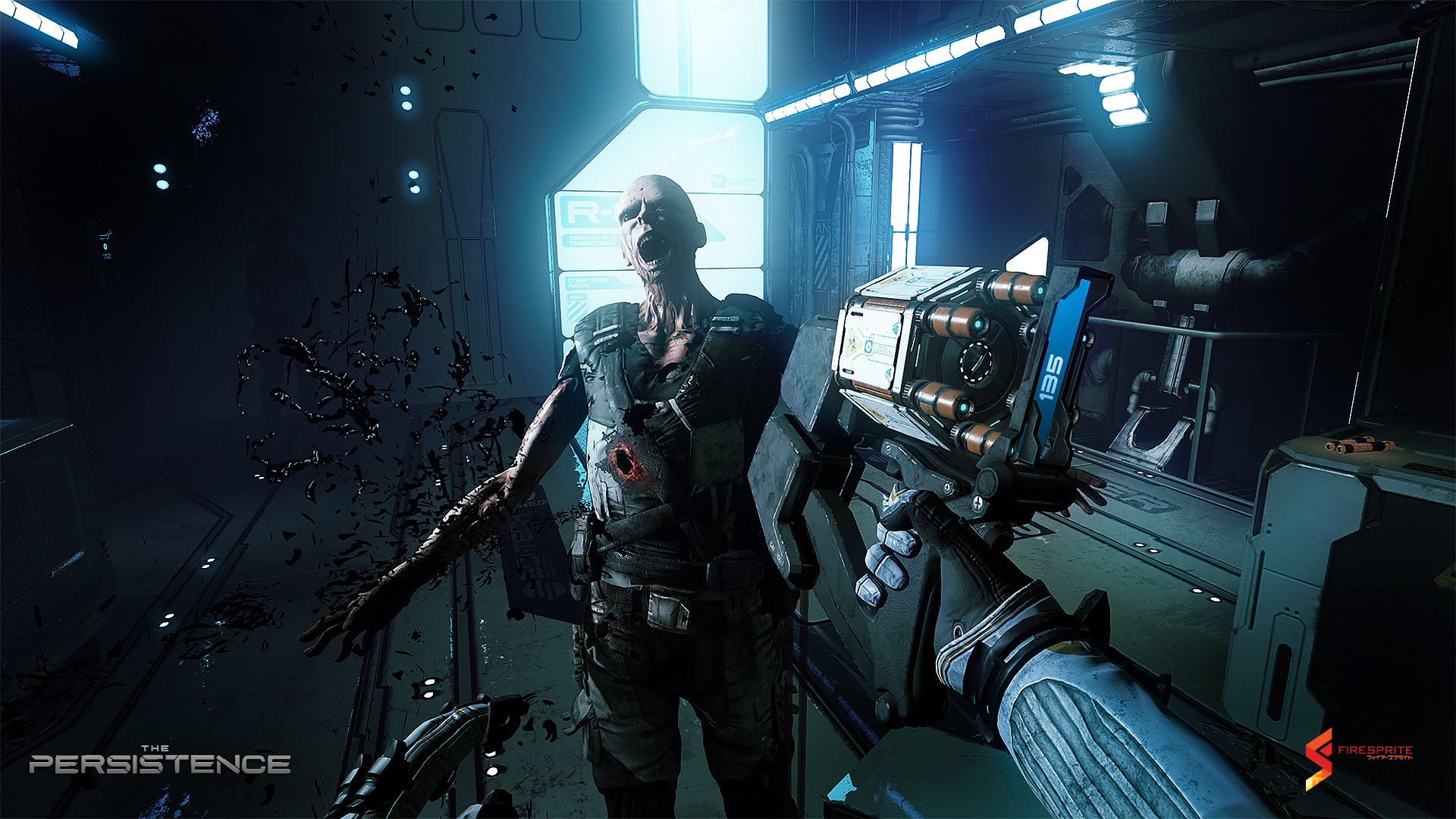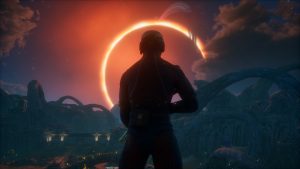
Rogue-lites are some the most endearing genres today. That’s despite the need to restart every time you die or the difficulty of some experiences or even having to try, again and again and again, to succeed. There’s just something about the danger and each new experience that makes it worthwhile. Case in point is Firesprite’s The Persistence, a first person horror game for PlayStation VR which introduces some neat rogue-lite mechanics.
Long story short, you awaken on a ship teeming with dead crew members attempting to fix things. When you die, the ship’s layout changes and you assume a different crew member’s identity. GamingBolt got in touch with Firesprite’s Becky Brown to learn about the game, what sets it apart from other first person horror titles and much more.
"The power-ups in the game serve the crucial role of adding variety to each life you play. But just as importantly, they turn the tables on the mutated crew."
Of the many VR games to release, what sets The Persistence apart?
There are many unique features that set The Persistence apart. Firstly, it’s a full game designed and tuned specifically for VR, from the core player movement and stealth gameplay, through to many of the power-ups, like the anti-grav smash. Another standout feature is the game’s companion app, Solex, which lets up to 4 non-VR players influence the gameplay on the phones or tablets – distracting enemies, discovering secrets, and leading the player through the ship. It’s also a rogue like, with players dying often and waking a different character on each life.
What inspired the game’s sci-fi setting? Can you tell us a bit about the story?
It’s fair to say that here at Firesprite we are all massive sci-if geeks, so it was a no brainer for us. We had themes of loneliness and helplessness which we wanted to play with, which guided us when creating the back story and game structure. The Persistence is the first ship to travel faster than light and is 17,000 light years from earth. If something goes wrong, then there is no rescue, there is nobody to save you, there is no hope.
And it’s after the catastrophic incident that the game starts. The crew have been mutated, with huge physically and mental aberrations. They’ve killed anyone not affected and are now wandering the ship. You need to find out how and why the incident occurred and somehow try and patch up The Persistence to get her home…
The items sound pretty interesting from the Stem Cell Harvester and Gravity Bomb to the Rage Serum. What other weapons will players across and what was the thought process when creating them?
The power-ups in the game serve the crucial role of adding variety to each life you play. But just as importantly, they turn the tables on the mutated crew. Under normal circumstances, you are their prey, weak and slow compared to them, but the power-ups flip this relationship on its head. The fabricator machines on board the Persistence create power-ups.
The latest cool additions to the fabricators are the ‘anti-grav smash’, where you gain telekinetic powers and lift up enemies and smash them in to the floor and ceiling by moving your head (which is SO satisfying!) and the ‘chainsaw teleporter’ which was inspired by telefragging opponents in Doom! With this power-up you get a limited time to teleport on top of the mutants, liquidizing them! In total, there will be around 25 unique power-ups.
"Each ‘room’ is made up from various parts, such as pillars, floor plates, archways, door portals etc."
Did rouge-lite games inspire the “respawning as a different crew member” mechanic? How does controlling a different crew member pan out narratively in the long run?
The Persistence has a lot in common with rogue-lite games. That means each character you play is somewhat disposable, as you don’t spend enough time to bond with them. You spend a lot of time in the company of IRIS, the ship’s computer, and get to know her really well. She has a story of her own that you discover as you play, and it turns out she wasn’t immune to the effects of the incident that mutated the crew…..
What kinds of upgrades can players purchase from the stem cells collected?
The stem cells that you harvest and collect are used for 2 different things that you need to strategise on. In the short term you can spend some to enhance and wake a ‘better’ member of the crew for your next life – for example, they might be weapons trained, allowing all weapons to be more effective. You get a choice of 3 crew members each time, with 1 of them being free, but with no enhancements. In the longer term, you can save up and invest in permanent upgrades to the crew members, permanently increasing core stats such as movement speed or hit points.
Given the game’s procedural generation elements, how does the environment change? How do you avoid repetition or the general feeling of deja vu?
Each ‘room’ is made up from various parts, such as pillars, floor plates, archways, door portals etc. The next layer added to this is the locations of cover objects based on tuned gameplay rules. Then comes the hazard placements such as purge machines or explosive panels. There is a detail pass which fills the area with additional objects and environmental story telling. When the basic layout is done, then enemies are spawned based on difficulty weighting for the challenge they offer. Pacing is also an important part of this puzzle, so we create areas with no danger to give the player a breather, or a room full of loot and danger to tempt them in to taking big risks!
At this stage, The Persistence appears more first person shooter than sci-fi. Could you tell us about a few of the survival horror elements?
This is mostly down to pacing and progression of the game. At many points you are hopeless compared to the enemies, often running for your life or skulking in cover to avoid them whilst looting the ship to try to find something to give you an advantage. It’s pretty scary!
"VR games need big power! Drawing the scene twice (once for each eye) and at a constant 60fps whilst maintaining AAA quality requires some serious horsepower."
What can you tell us about the companion app and the sort of player vs. player-like gameplay it provides? How does it add to the overall tension of the main game?
They big idea behind the Solex companion app can be summed up as ‘who do you trust?’. Up to 4 players can connect to the VR game and they decide if they want to help or hinder. Helping the player out is the regular way of playing with Solex, with every helpful act rewarding XP to unlock new abilities on their tablet. Highlighting an enemy or hazard will show a big red flashing number telling you how much XP you will lose if the player is damaged by it – however – once in a while, it displays a big flashing green number of how much XP you will GAIN if you can lure the VR player in to taking damage from that hazard.
The Solex players have the ability to affect the gameplay which can help the VR player avoid damage or to lead them right in to it. A typical example is the ability to drop a temporal effect in to the ship that attracts enemies towards it – on one hand, this can be done to drag enemies away from where the VR player is heading, but on the other hand they could use that power to lure enemies right to where the player is hiding!
As someone who is working on the PS4 Pro, what kind of advantages do you think it will bring to VR due to its added technical prowess?
VR games need big power! Drawing the scene twice (once for each eye) and at a constant 60fps whilst maintaining AAA quality requires some serious horsepower. And this is what PS4 Pro gives developers. It allows us to oversample the screen resolution to create sharper images and use more complex models and shaders to make games look truly stunning in VR.
What is your target frame rate and resolution on the base PS4 and PS4 Pro?
60fps is absolutely non-negotiable. PS4 Pro will render at 150% resolution to create a super sharp and crisp image.

















